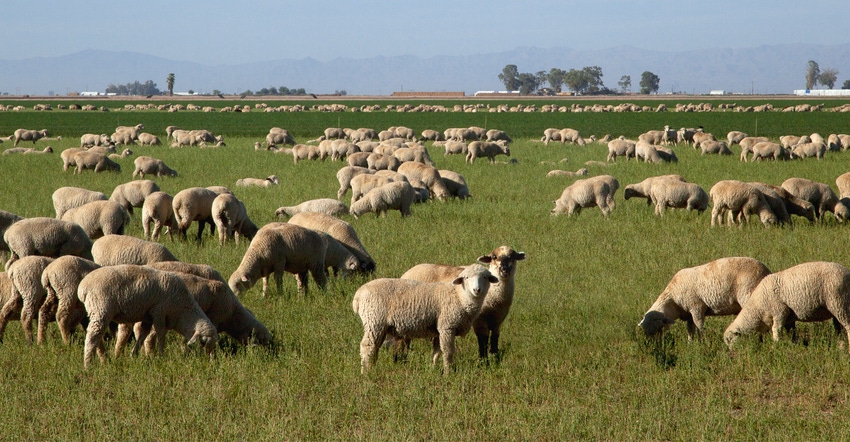
Managing the body condition score of your sheep flock can help assess the animals’ nutritional and health status. For most livestock, a BCS can be assigned via visual examination; however, sheep’s wool can make that more difficult.
Jaelyn Quintana, a sheep field specialist with South Dakota State University Extension, shares how to best manage and maintain a flock’s BCS throughout the year.
“Assigning sheep a body condition score aids in estimating external fat stores, which can be used to identify nutritional and health status,” Quintana says.
Reproductive efficiency is mainly determined by the animal’s nutrition, and ewes need greater levels of conditions during periods of nutritional stress, she says. A BCS evaluation can be done anytime an animal is being handled, but the sheep must be standing for proper assessment.
“When assessing BCS, at least 10% to 20% of the flock should be given a BCS to accurately assess the average flock status,” she says.
Using an average BCS can help producers better care for any animals that may require additional nutrition or care.
How to assign scores
BCS is a subjective evaluation, performed by palpating between the vertebra and loin muscles between the last rib and hip bones. The first step is to find the spine between the last rib and in front of the hip bone.
“You’ll follow the loin muscle down the sheep’s side to locate the transverse process and assess fat deposition and muscle fullness,” Quintana says.
The transverse process should be easier to locate in thinner sheep. “The loin muscle and fat cover will fill the palm of your hand, and pressure required to feel the transverse process will increase with greater condition,” she says.
Animals should be scored between 1 and 5, with:
1 being emaciated and skeletal
2 being thin
3 meaning average with some fat cover
4 being fat
5 meaning obese, with excess fat from brisket to tailhead
The need of the sheep may vary according to the life stage of the animal. “A mature ewe with a single lamb should be between 2 and 4, depending on if they are breeding, lambing or weaning,” Quintana explains. “A ram should be somewhere between 2 and 3 for optimal reproductive efficiency.”
Managing a ram’s BCS will optimize breeding performance and semen quality, as over- or under-conditioned rams may fail to physically perform.
Perfect assignment of scores is less important than giving a relative score and keeping it consistent across your herd. “Determining the difference between a 3 and a 3.5 is less significant than recognizing the relative difference between a 2 and a 3.5,” Quintana says.
Proper management of body condition score can increase economic efficiency and optimize productivity of the sheep flock. By assessing the nutrition and health status of your flock through BCS, producers can positively influence pregnancy rates and lamb survival.
Find more information on how to properly assign BCS from SDSU Extension.
About the Author(s)
You May Also Like






